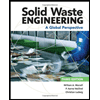
(a)
Average unit cost for operating a standard vehicle on a level roadway.
Answer to Problem 7P
Explanation of Solution
Calculation:
The average unit cost for operating a standard vehicle on a level roadway is as follows:
Let the depreciation cost per mile as
Let the registration and insurance cost per mile as
Let the maintenance cost per mile as
Let the fuel cost per mile as
The total cost required per mile by adding all the costs.
Total cost required per mile
Total cost required per mile
Conclusion:
Therefore, the average cost required for operating a standard vehicle on a level roadway is
(b)
Average unit cost for travel time for a truck.
Answer to Problem 7P
Explanation of Solution
Calculation:
The average unit cost for travel time for a truck.
Let the cost required per mile to operate the truck as
For the total unit costs using the relation
Substituting the values, we get
Substitute the value of
Let the average speed be
Substitute
Conclusion:
Therefore, the estimate average unit cost for travel time for a truck is
(c)
Average unit cost for single-vehicle property damage.
Answer to Problem 7P
Explanation of Solution
Calculation:
The average unit cost for single-vehicle property damage.
Substituting the values, we have
Conclusion:
Therefore, the average unit cost forsingle-vehicle property damage is
(d)
Average unit cost for personal injury.
Answer to Problem 7P
Explanation of Solution
Calculation:
The average unit cost for personal injury.
Let the cost for X-ray be equal to
Let the cost for emergency to be equal to
Conclusion:
Therefore, the average unit cost for personal injury is
(e)
The average unit cost for fatality.
Answer to Problem 7P
Explanation of Solution
Calculation:
The average unit cost for fatality.
It varies from $100,000 to $4.5 million.
Want to see more full solutions like this?
Chapter 13 Solutions
Traffic And Highway Engineering
- A tension member made of L4x4x1/2 is connected to gusset plate with welds. Using E70electrode and ½ inch weld size, design the balanced weld lengths.( Use AISC manual, LRFD units)arrow_forward= A steel pile (H-section; HP 310 x 125; and so A, 15.9 x 10-3 m² ) is driven into a layer of sandstone. The length of the pile is 25 m. Following are the properties of the sandstone: unconfined compression strength = qu(lab) = 78 MN/m² and angle of friction = 36°. Using a factor of safety of 3, estimate the allowable point load that can be carried by the pile. Use [qu(d Qu(lab). qu(design) b)/5]. (Enter your answer to three significant figures.) Qp(all) kNarrow_forwardСи A concrete pile 20 m long having a cross section of 0.25 m x 0.25 m is fully embedded in a saturated clay layer. For the clay, given: Ysat = 18 kN/m³, = 0, and c₁ = 80 kN/m². Determine the allowable load that the pile can carry (FS-3). Use the A method to estimate the skin resistance. For L = 20 m, A = 0.173. (Enter your answer to three significant figures.) Qall kNarrow_forward
- A concrete pile 65 ft long having a cross section of 15 in. × 15 in. is fully embedded in a saturated clay layer for which Ysat = can carry. (Let FS = 3.) Use the a method equation QsfpAL = ac₂pAL and the following table to estimate the skin friction and Vesic's method for point load estimation. Си α Pa ≤ 0.1 1.00 0.2 0.3 0.92 0.82 0.4 0.74 0.6 0.62 0.8 0.54 1.0 0.48 1.2 0.42 1.4 0.40 1.6 0.38 1.8 0.36 2.0 0.35 2.4 0.34 2.8 0.34 Note: atmospheric pressure pa ≈ 100 kN/m² or 2000 lb/ft². (Enter your answer to three significant figures.) Qall = kip 121 lb/ft³, = 0, and Cu = 1600 lb/ft². Determine the allowable load that the pilearrow_forwardA tension member made of L4x4x1/2 is connected to gusset plate with welds. Using E70electrode and ½ inch weld size, design the balanced weld lengths.( Use AISC manual, LRFD units)arrow_forwardUsing the ultimate strength method, determine the maximum load, Pu, that the welded connectioncan carry. Weld size is ½ inch. The structural members are made of grade 50 steel. (Use AISC manual, LRFD units)arrow_forward
- 21:52 | 2.3Kb.s ← CamScanner ۲۰۲۵-۰۴... هوا 8:05: ان 4.5G 443% به نام خدا تمرینات درس مکانیک سیالات سری دوم - حامد سرکرده 0.3m A 0.3m 0.6m روغن B $ 09 آب lm P=13.74kpa gage PA هوا 4.6m سال 0.3m 50mm Pc 13.72kpa gage EL = 50 EL = 30 ۱ در شکل رو به رو فشار در نقاط A, B, C,D بر حسب پاسکال چقدر است؟ فشار P چقدر است چگالی روغن ۰/۸ میباشد در داخل مخزن استوانه ای رو به رو که محتوی نفت به چگالی ۰/۸ میباشد مخزن استوانه ای آبی قرار گرفته است. مقدار P فشار نسبی در فشارسنج (A) و ارتفاع h چقدر است. ۴- لوله های A و B که حاوی آب در فشارهای ۲/۷۶ و ۱/۳۸ بار به ترتیب هستند اختلاف ارتفاع جیوه در مانومتر نشان داده شده در شکل چقدر است؟ چگالی جیوه ۱۳/۵۷ در نظر گرفته شود. Scanned with CamScannerarrow_forwardh EL = 50 EL = 30arrow_forwardh EL = 50 EL = 30arrow_forward
- Calculate the instantaneous deflections and the long term-term deflections after 15 years for the flat roofbeam shown below (simply supported). Use fy = 60,000 psi, fc′ = 4000 psi, and assume that the uniformdead load value shown does not include beam weight, and that none of the concentrated live loads aresustained. The concrete weight is 135 pcf. Investigate the deflection acceptability of the beam accordingto the ACI Code.arrow_forwarda) Determine the global stiffness matrix of the beam shown in Figure below. Assume supports at 1 and 3 are rollers and the support at 2 is a pinned support. Indicate the degrees-of freedom in all the stiffness matrices. EI is constant. Use the values of w and L1 as 50 kN/m and 1.75m, respectively. Note, L2=3L1. b) Determine the rotations at all the nodes of the beam and reactions at the supports. Show all calculations. c) Draw the BMD of the beam on the compression side showing the salient values. What are the maximum bending moments of the beam? Draw the deflected shape of the beam.arrow_forward20 ft 8 #8 in 2-layers 18 in 30 inarrow_forward
 Traffic and Highway EngineeringCivil EngineeringISBN:9781305156241Author:Garber, Nicholas J.Publisher:Cengage Learning
Traffic and Highway EngineeringCivil EngineeringISBN:9781305156241Author:Garber, Nicholas J.Publisher:Cengage Learning Solid Waste EngineeringCivil EngineeringISBN:9781305635203Author:Worrell, William A.Publisher:Cengage Learning,
Solid Waste EngineeringCivil EngineeringISBN:9781305635203Author:Worrell, William A.Publisher:Cengage Learning,

